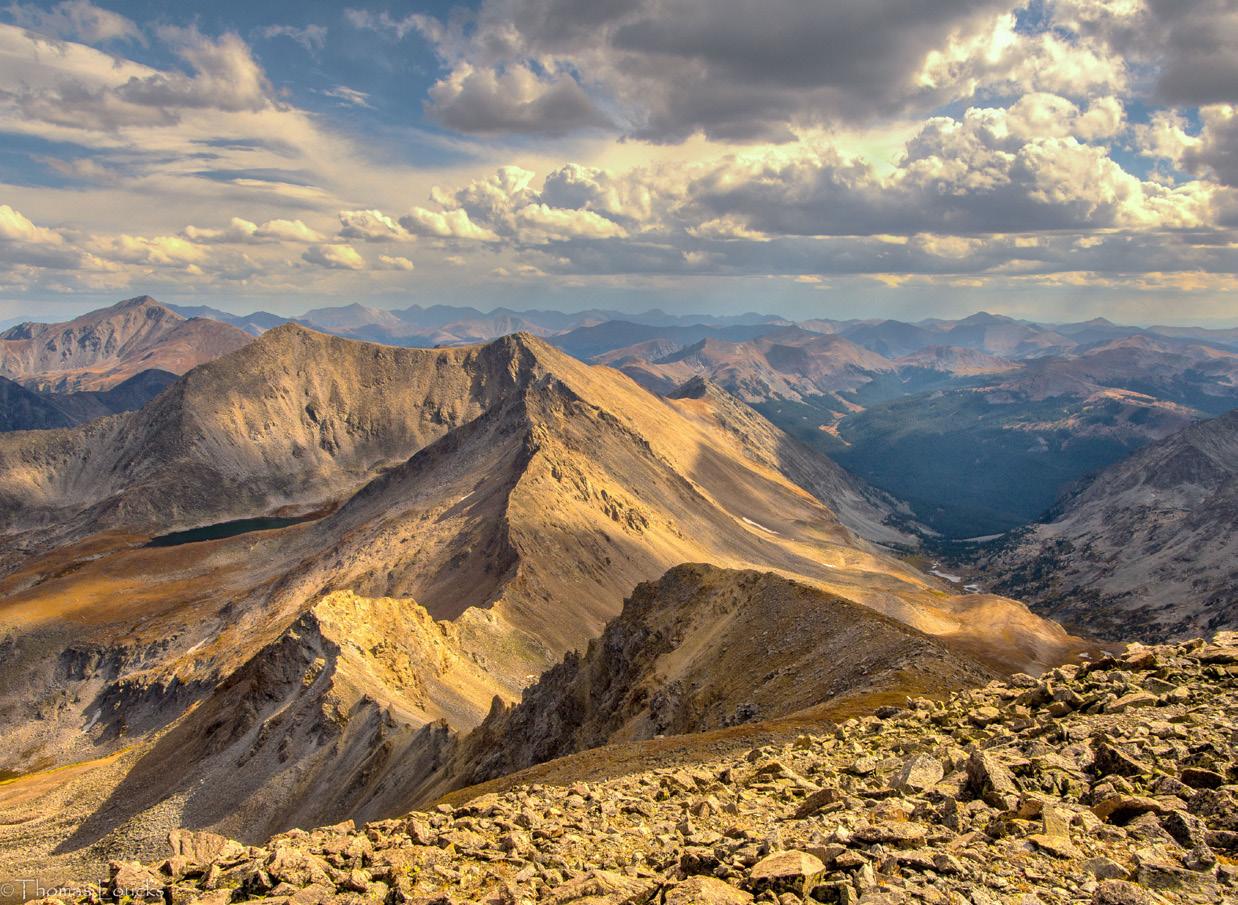
6 minute read
Focal Points
Sierra Club Camera Committee Magazine June, 2020
Cover Story: Photos from Further Afield
Photos and Story by: Thomas Loucks, Jr
(all photographs by the author except Bighorn Sheep)
Colorado has some seventy-four summits which exceed 14,000 feet in altitude – the so-called “14ers.” Fifty-three of these are ranked, with the remaining peaks being unranked because their summits rise less than 300 feet above the saddle connecting each of these to its nearest ranked neighbor. Climbing the 14ers has become overwhelmingly popular, and those 53 summits now attract such a mass of hikers who vie to “do” the 14ers that often one cannot even park a car at a trailhead. However, with an astonishing 841 summits surpassing 13,000 feet – the most in North America – Colorado has 767 “13ers” for the rest of us (of which 584 are ranked 13ers for those who are counting). Besides the altitude, the 13ers’ biggest differences are the absence of people and, in some cases, not even a trail. You need to be very self-sufficient in the 13ers. This article emphasizes the solitude of the 13ers and describes what a landscape and wildlife photographer can find in Colorado’s 13ers. The wildflowers are of course spectacular but are not specifically addressed in this brief article.
Three jagged 14er summits in the central Sangre de Cristo are arguably amongst the most sought-after trophies: Crestone Peak, Crestone Needle, and Kit Carson. Overrun with climbers, these three fearsome summits demand extreme diligence, and accidents are often fatal. What’s the attraction today, when now the two lakes at the main camping site are filthy and polluted?
Only just south or north of these three peaks are lonely summits and lakes where one can find solitude. For instance, here is a photograph of Mt. Adams (13,931’) which has the same geology, similar topography, and is located just to the north. In fact, 14er Kit Carson is just over the skyline to the
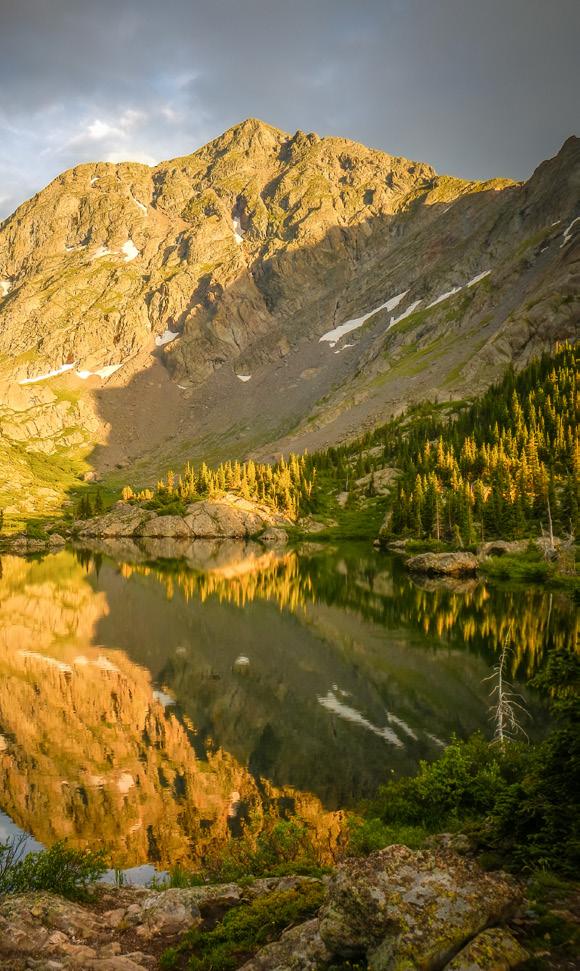
right of this photograph. My hiking colleague and I had this peak, the lake, and in fact the entire valley to ourselves on a mid-July weekend only 3 summers ago.
The solitude was fabulous, and the opportunity for photos was endless.
In the morning, the lake entertained us with dazzling reflections. We spent two full days here without seeing another person.
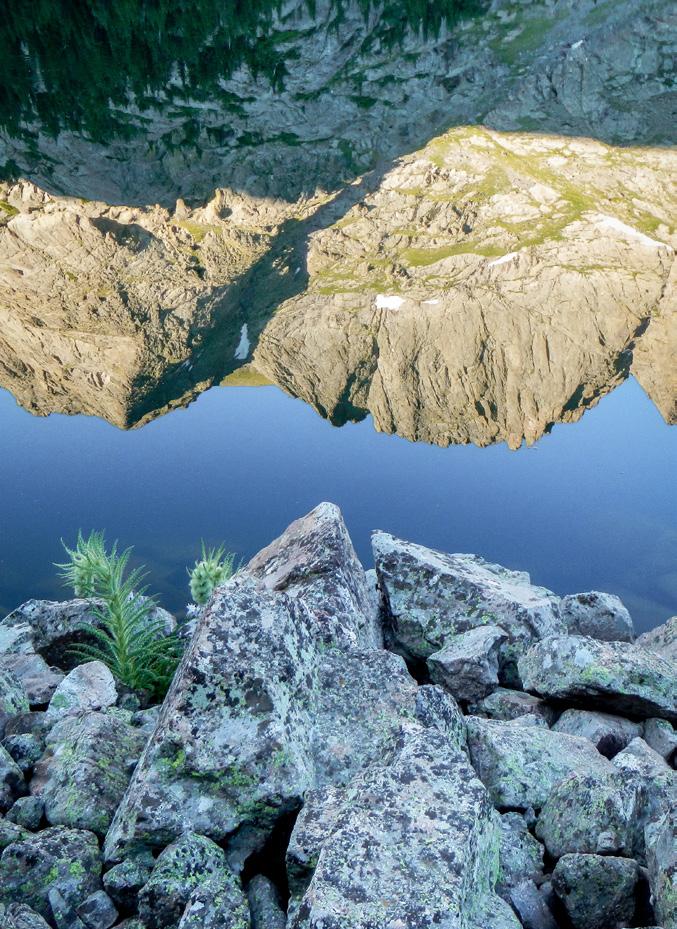
© 2020 Butch Mazzuca, All Rights Reserved
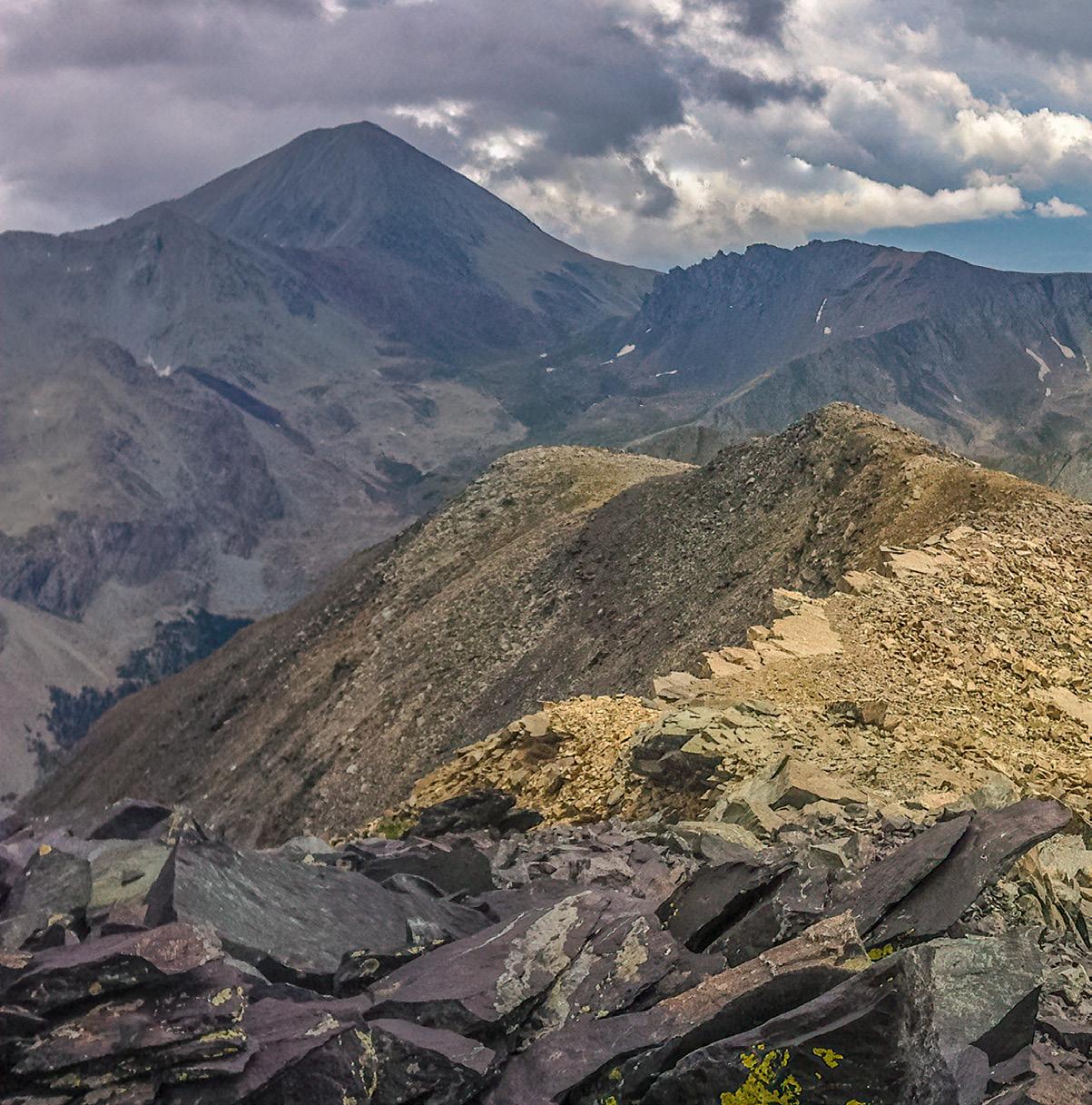
The headwaters of the Huerfano River, located west of Walsenburg, offer spectacular alpine vistas. Based on cars parked in the valley, the nearby 14ers were mobbed. In contrast, we enjoyed an eight-mile round trip scramble on rugged California Peak (13,849’), without seeing another soul.
What kinds of wildlife might we see up here?

The headwaters of the Huerfano River, located west of Walsenburg, offer spectacular alpine vistas. Based on cars parked in the valley, the nearby 14ers were mobbed. In contrast, we enjoyed an eight-mile round trip scramble on rugged California Peak (13,849’), without seeing another soul.
What kinds of wildlife might we see up here?
First, it is common to see and hear the yellow-bellied marmots as they whistle loudly to members of their clan. Native to mountainous regions of western North America, marmots live above 6,500 feet in colonies of up to twenty
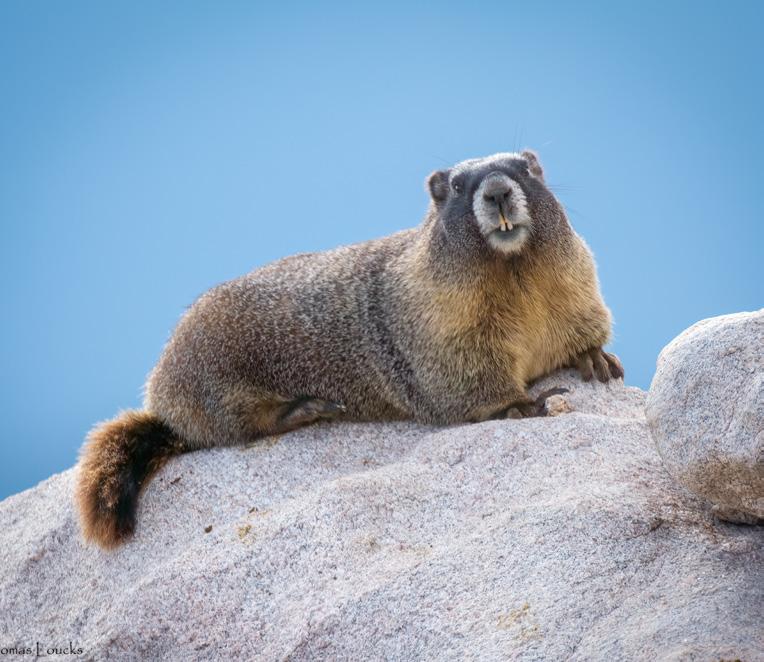
individuals with a single dominant male. They are diurnal and feed on plant material, insects, and bird eggs. How do they get through the winter? They hibernate for approximately eight months, starting in September.
Pikas are small mammals related to rabbits – about 6 inches for scale - and live at high elevations in crevices between the rocks. They don’t hibernate, so they frantically gather food in the summer that they eat all winter inside their frozen, rocky shelters. They’re adorable and fun to photograph. What’s their secret for staying warm? Maybe the fur on their toes? 8

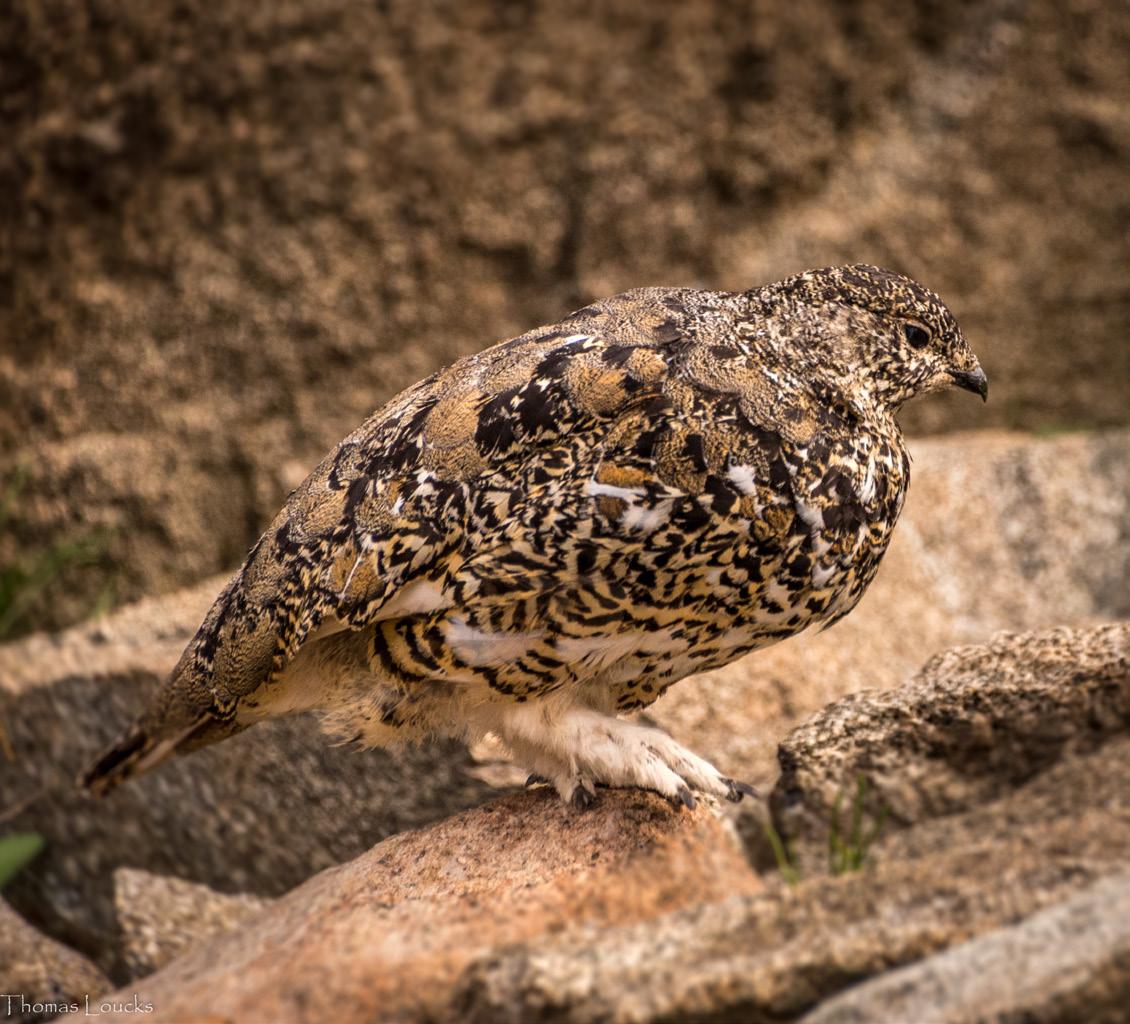
The white-tailed ptarmigan is the smallest member of the grouse family. It’s white in winter and speckled in summer, all for purposes of camouflage in the alpine landscape at tree line. It may feed insects to its young but is otherwise an herbivore. They remain out in winter, so what’s their secret for staying warm? They have feathers on their toes!
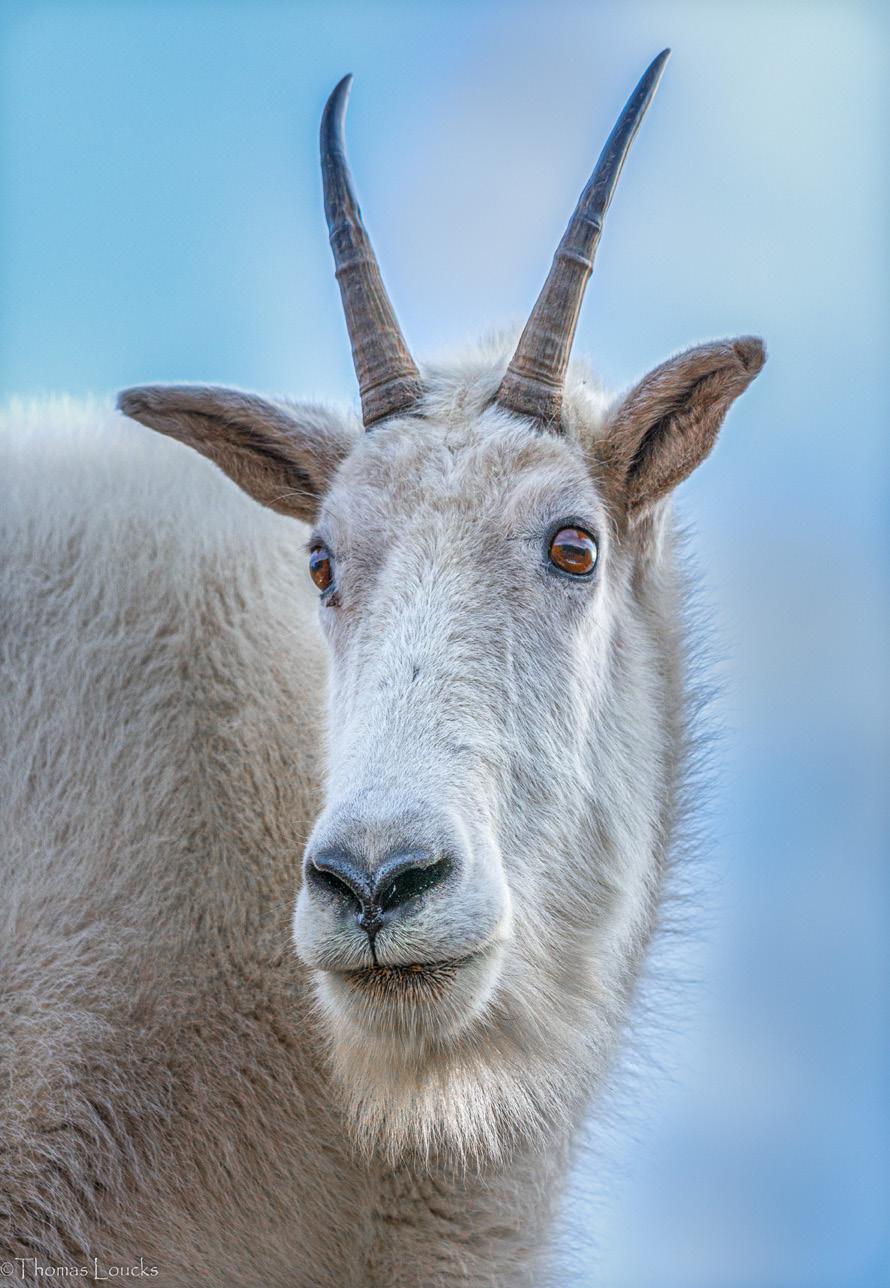
© 2020 Mark Rodenburg, All Rights Reserved
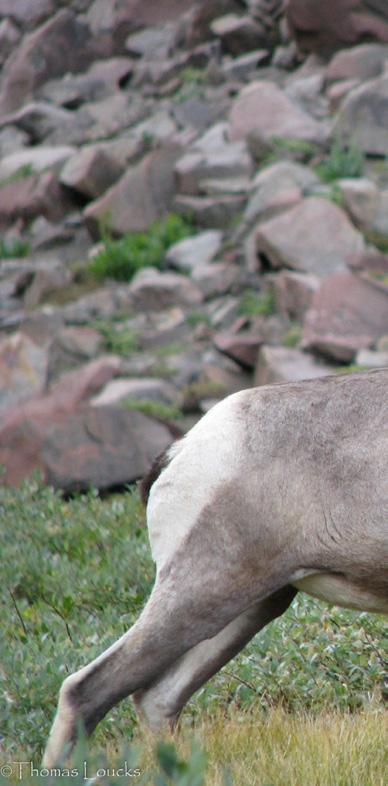
Mountain goats are not actually goats but are related to antelope and cattle. Here in the Rockies, they’re generally very used to humans. Maybe they figure that any human that can get to where they are, can’t be all bad? This nanny accompanied me for over a quarter mile on Grizzly D (13,400’), munching unconcernedly on wildflowers while I picked my way through the rocks; sometimes she was just several feet away. You can tell their age by counting the rings on their horns. In this portrait on the right, I think this female is in her fourth year.
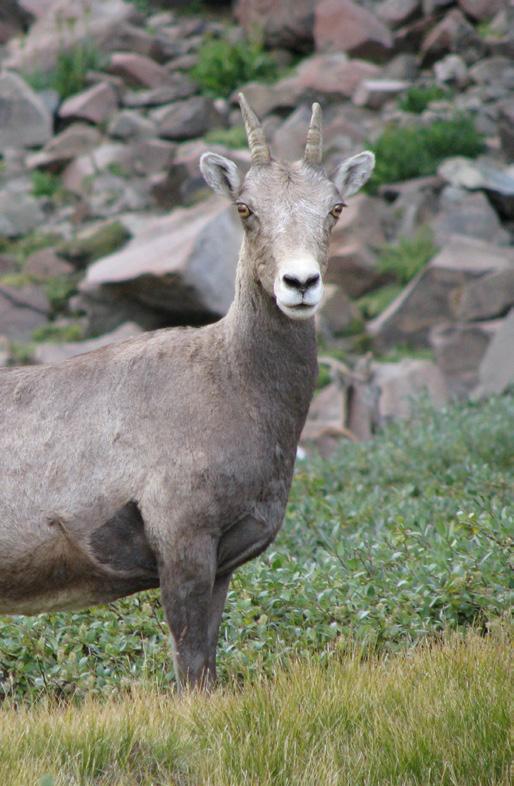
Mountain goats are not actually goats but are related to antelope and cattle. Here in the Rockies, they’re generally very used to humans. Maybe they figure that any human that can get to where they are, can’t be all bad? This nanny accompanied me for over a quarter mile on Grizzly D (13,400’), munching unconcernedly on wildflowers while I picked my way through the rocks; sometimes she was just several feet away. You can tell their age by counting the rings on their horns. In this portrait on the right, I think this female is in her fourth year.
The state animal of Colorado is the Rocky Mountain Bighorn Sheep. Mark Rodenburg took these two images while we were ascending Columbia Point (13,980’). Notice how the sheep blend in with the landscape in the photo on the right – you may have to first see their movement in order to spot them.
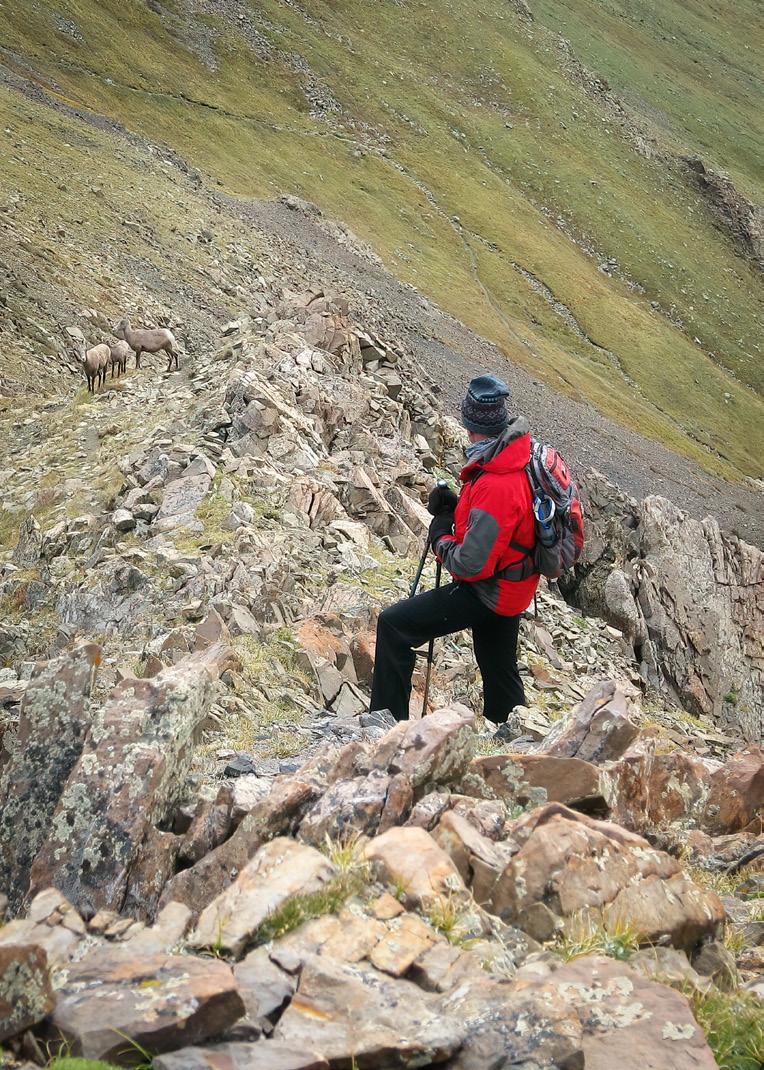
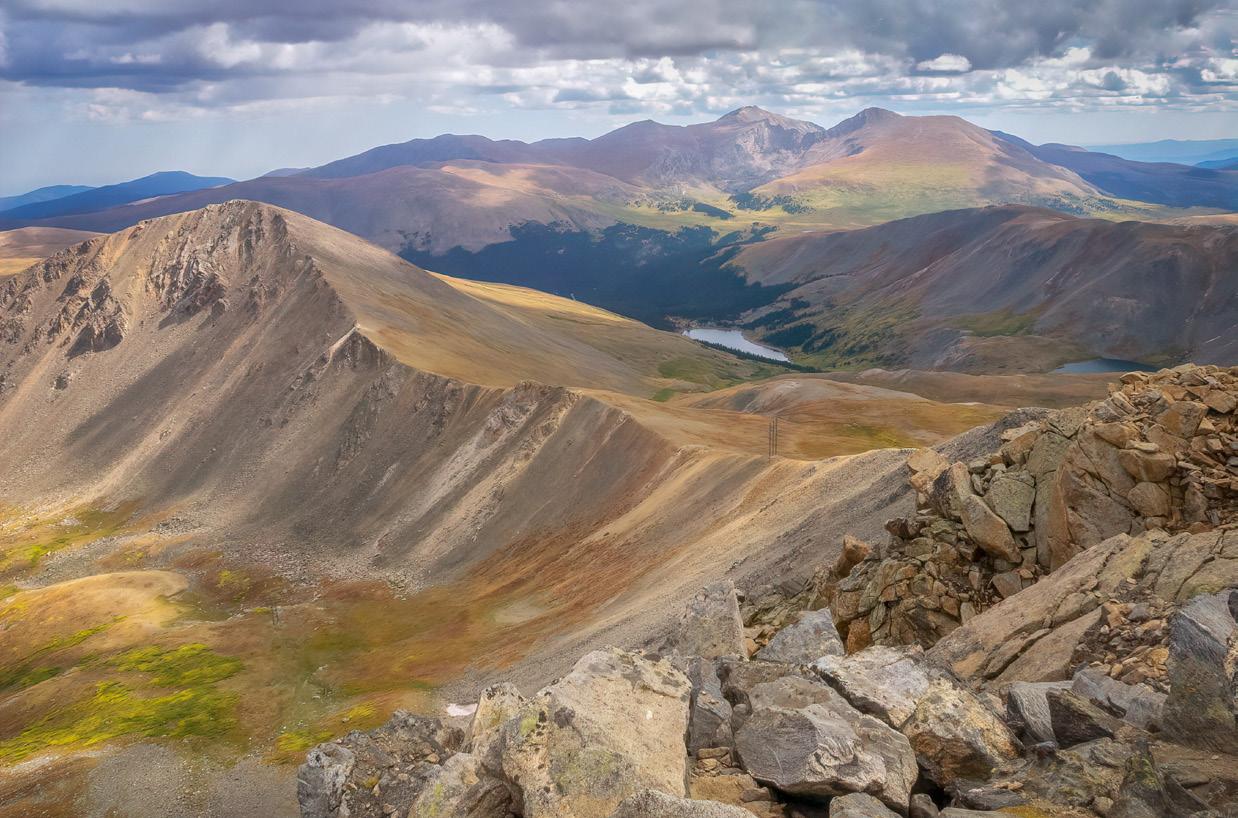
(Right) Late afternoon in remote parts of the Sawatch Range evokes the best of the 13ers for me. We had driven four miles from Winfield on a rugged jeep trail, then first climbed Missouri Mountain (14,067’) to attain this ridge, and followed by scampering several miles south over the summit of Iowa (13,831’) to get to this vista from Emerald Peak (13,904’). For hours on this ridgeline, we had had no sight of people or civilization, and this dramatically lit landscape rewarded our efforts. Note that the ridge line continues south toward two more and yet unnamed 13'ers – located in the center left of the photo at 13,762’ and 13,352’ - providing for exactly the kind of thin-air hiking and highaltitude photography one can expect to find in Colorado’s 13ers. So, if you’ve enjoyed this article, will I be seeing you up here? Actually, the odds are slim, as I’ve still got well over 600 peaks to visit.
(Left) This vista of Mt. Wilcox (13,408’) - taken from Argentine Peak (13,738’) - captures the point of this story. In the background, beyond Silver Dollar Lake, lie Evans (14,264’) and Bierstadt (14,060'), two of the most climbed 14ers located close to Denver. Bierstadt can average several hundred hikers per day in summer, and Evans even has an auto road up it. Trailheads for each of these four summits can be reached by passenger car in an hour from Denver, yet the two 14ers are crowded beyond credibility, and my friend and I enjoyed a full day and 360 degree views from above 13,000 feet and without seeing a soul.
